BanksiaBanksia Index Banksia ashbyi (Ashby’s Banksia) Banksia baxteri (Baxter’s Banksia) Banksia caleyi (Red Lantern Banksia / Caley’s Banksia) Banksia ericifolia Banksia grandis (Bull Banksia) Banksia integrifolia ssp. integrifolia Banksia media (Southern Plains Banksia) Banksia praemorsa (Cut-leaf Banksia) Banksia prionotes (Acorn Banksia) Banksia quercifolia (Oak-leaved Banksia) Banksia serrata (Saw Tooth Banksia) Banksia spinulosa x ericifolia ‘Giant Candles’
A widespread species through eastern Australia, the Banksia serrata, commonly known as the Saw Tooth Banksia or the Old Man Banksia, ages into an interesting gnarled tree that can grow up to 15 metres in height under the right conditions.

It has large leaves with toothed edges, and bears flower spikes that are usually cream coloured, about 120 mm long. The seed cones have long protruding follicles. The seedpods of the Banksia serrata persist on the tree almost indefinitely.
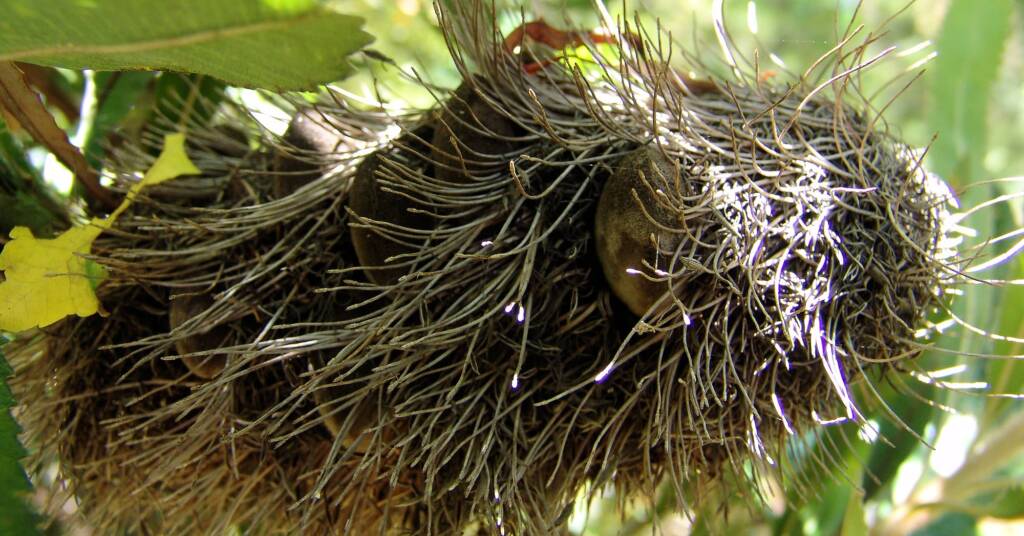
Flowering between December to June, Banksia serrata is a great bird attracting plant, that also attracts other wildlife. An excellent coastal plant and a great street tree in drier conditions, the Banksia serrata is also a good screening and feature tree.
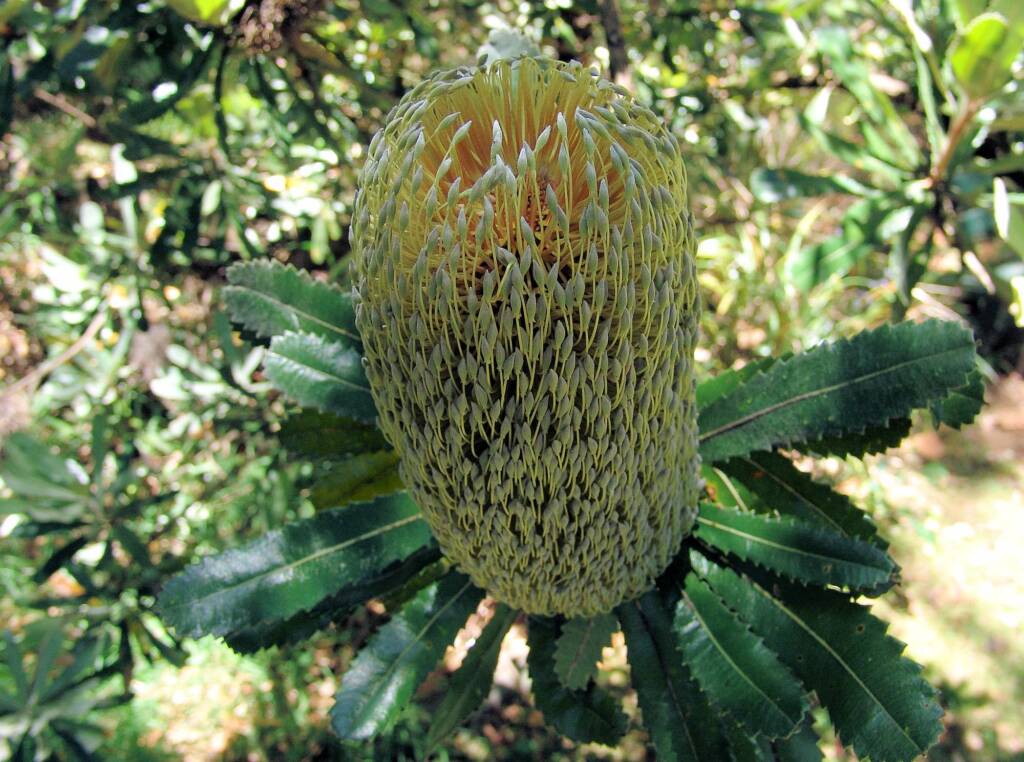
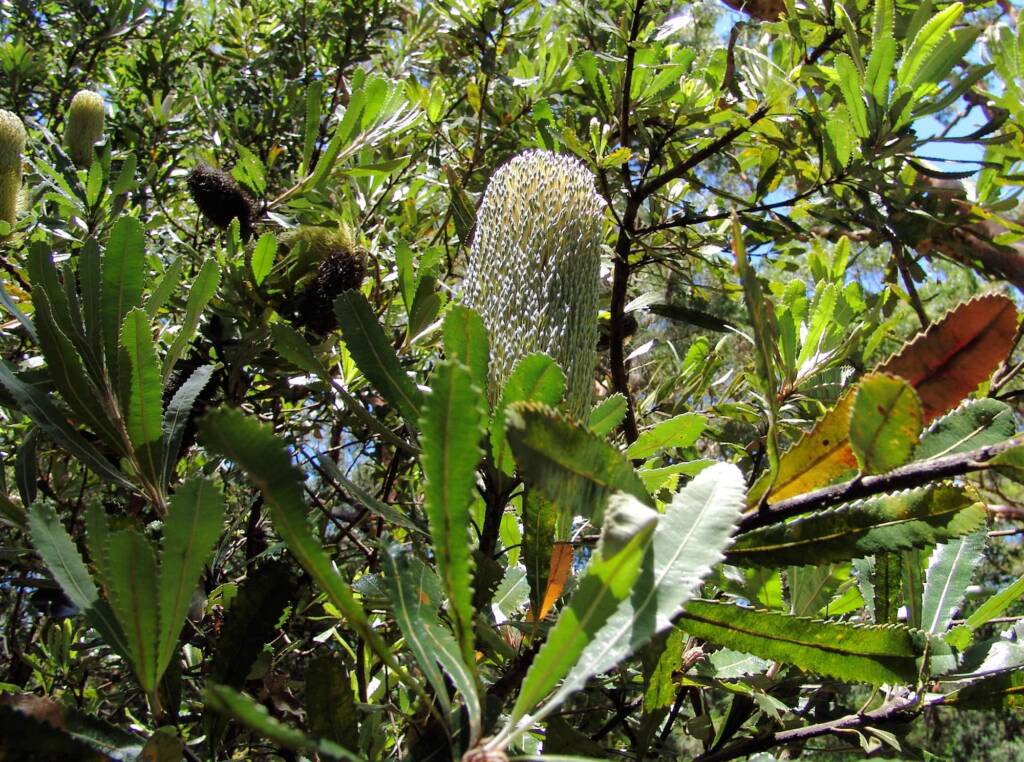
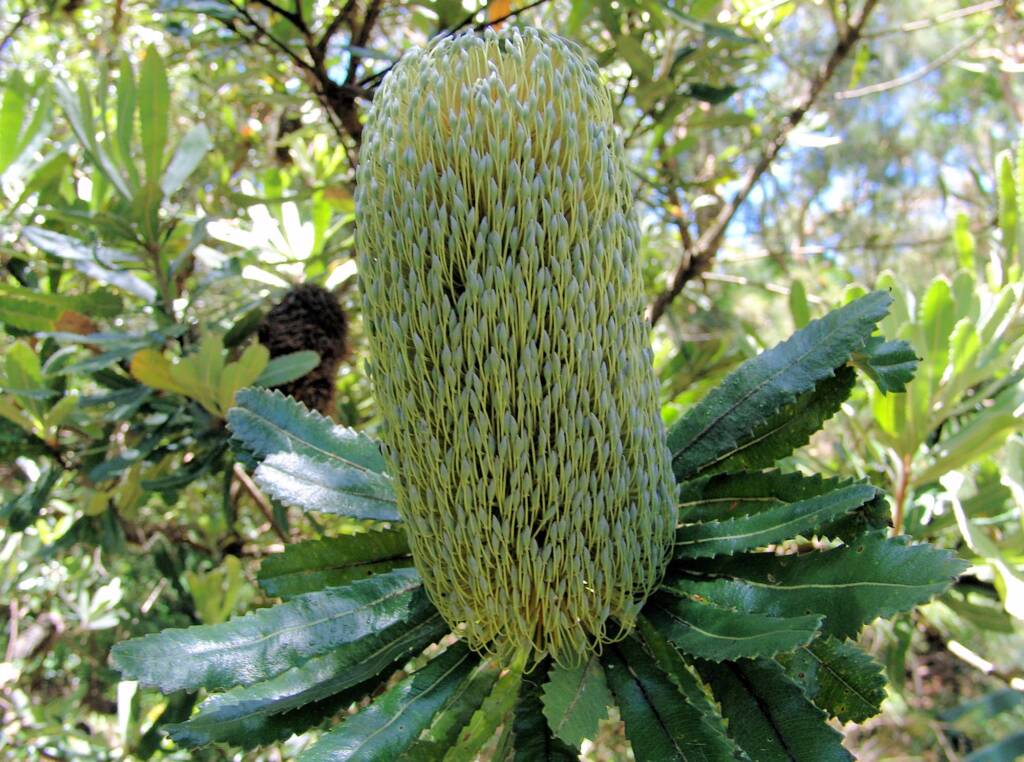


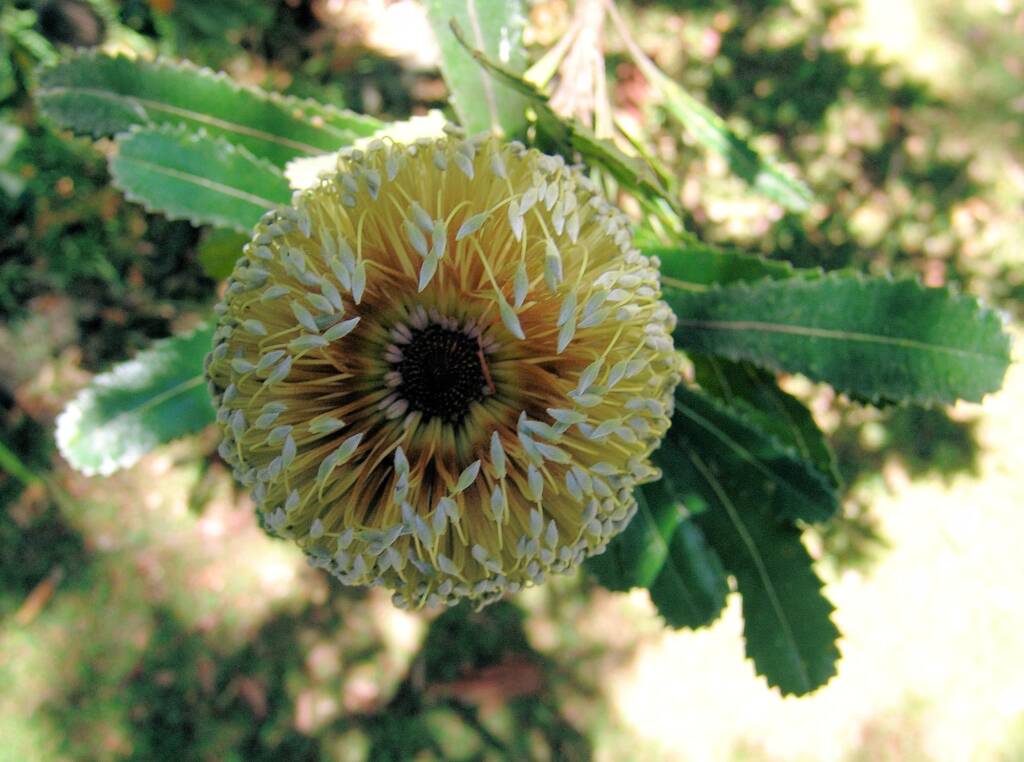
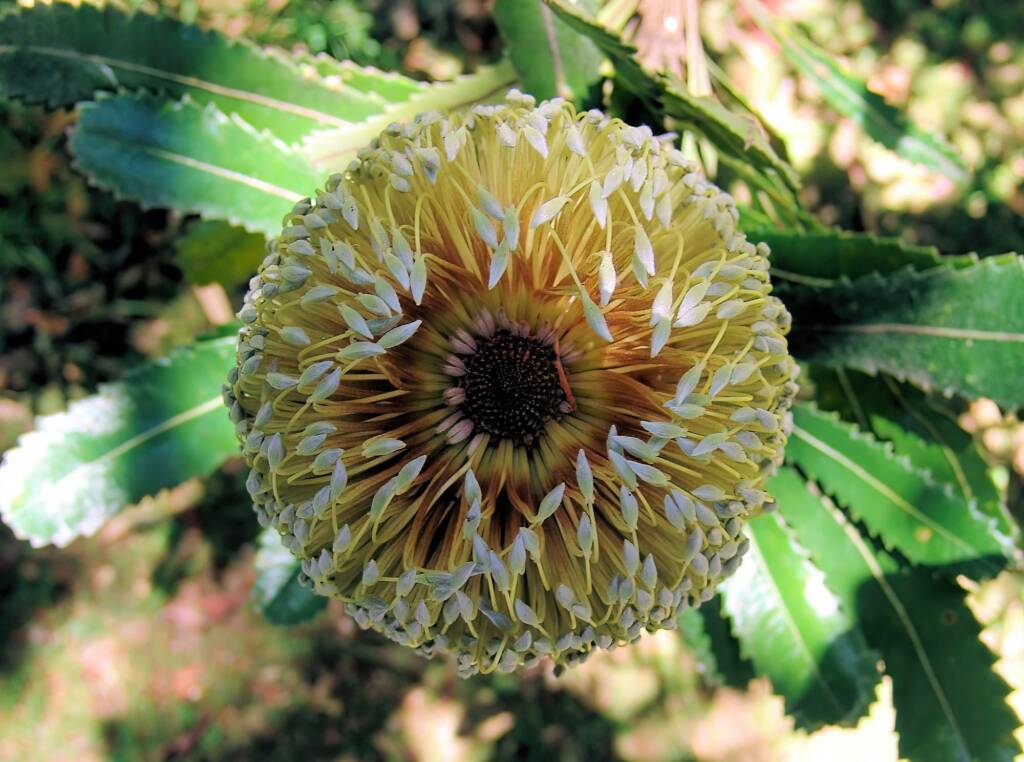



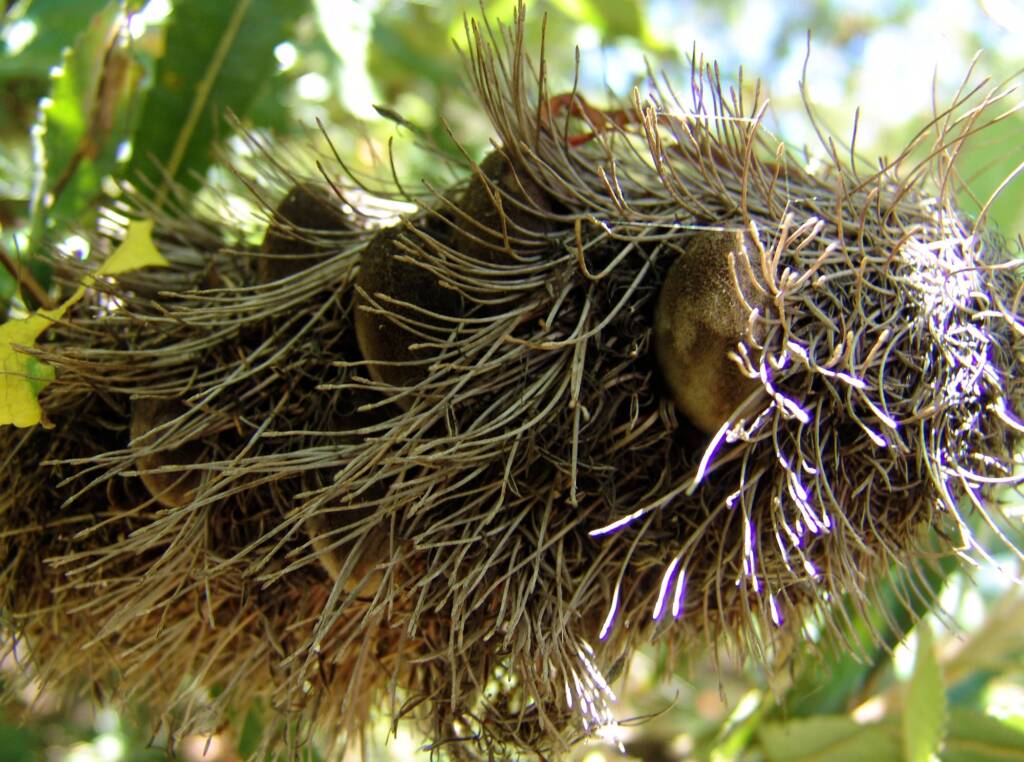
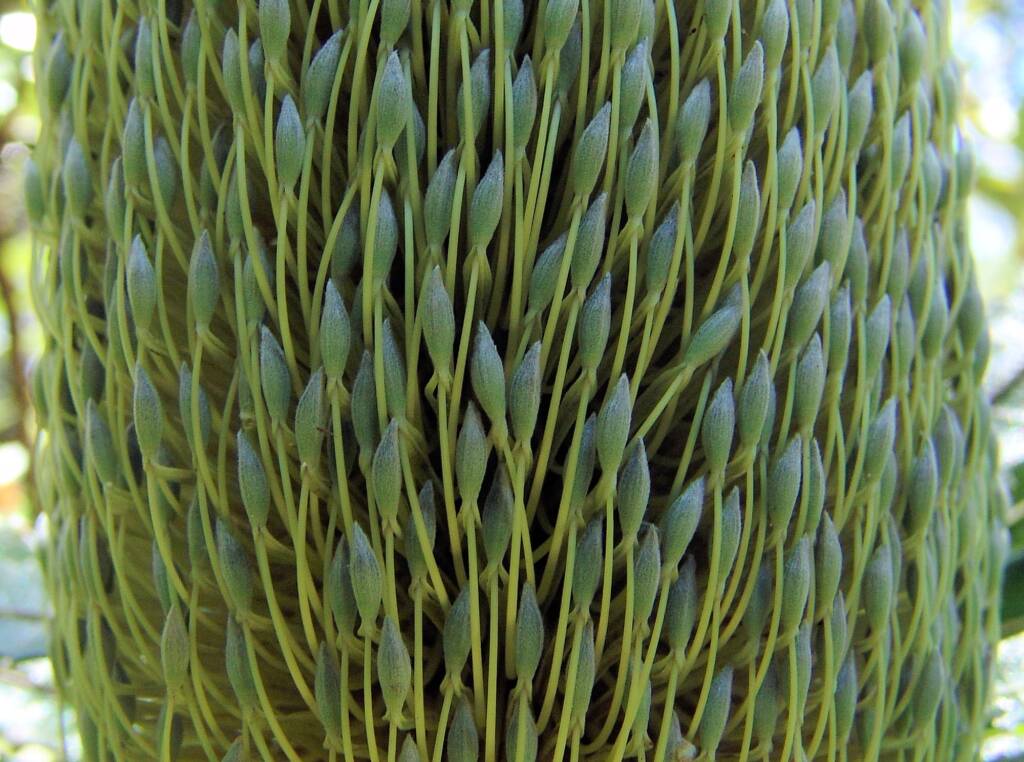
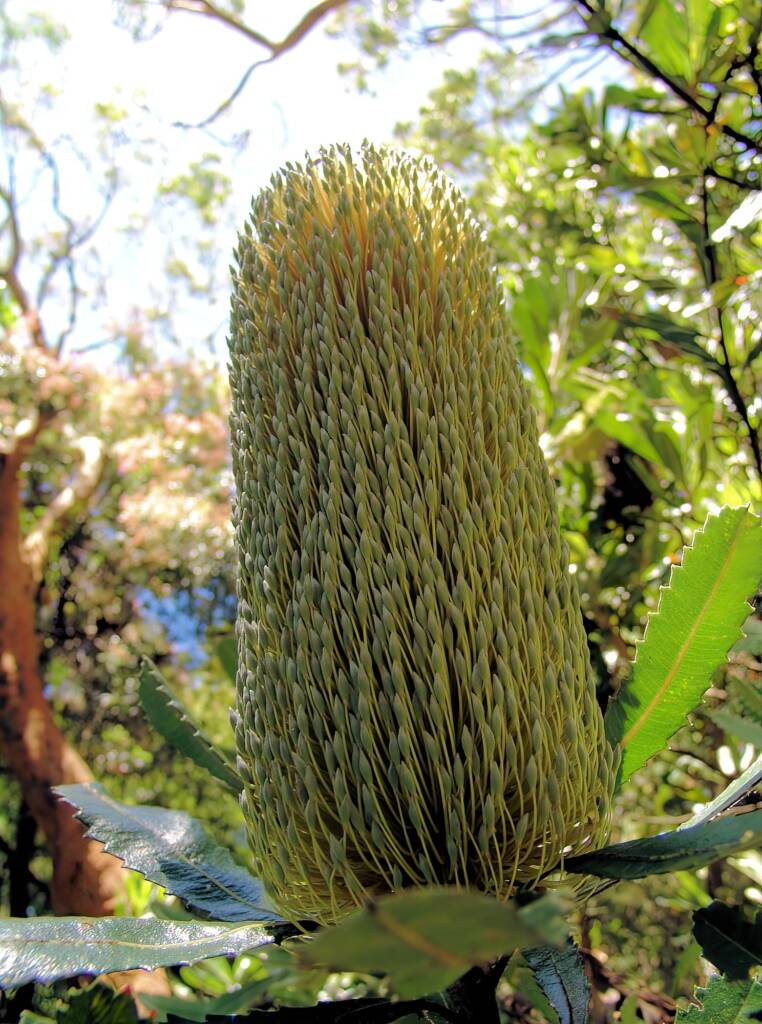
In the following two images (courtesy of © Karlo Taliana), you can see the pollen presenter of the two species of banksias that aid in identification between the two banksia — Banksia serrata and Banksia aemula.

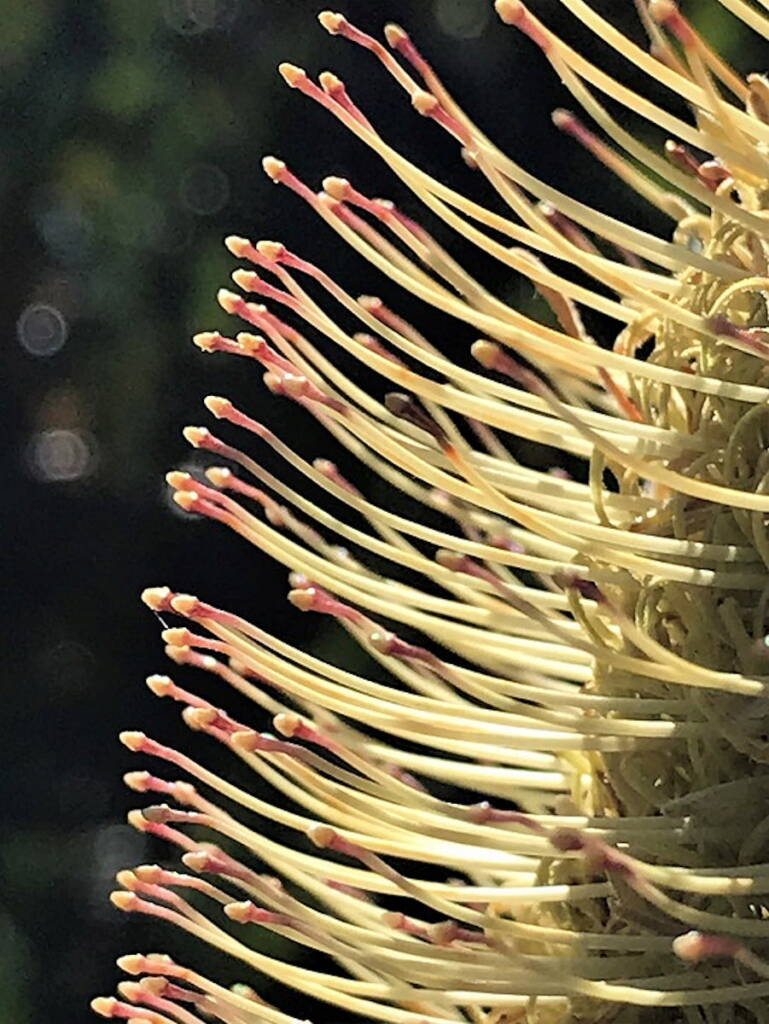
— click image to view full screen
Many thanks Karlo Taliana for giving us permission to share his images.
Many thanks to the members of Banksia lovers group, in particular Phil Manley and Karlo Taliana for ID of this banksia. Special thanks to Karlo Taliana for the detailed identification of this banksia…
extract: The macro features look very much like serrata – broader leaves with wavy margins, deeper colour to centre of flowerhead (the latter never seen in B aemula). The longer and more narrow pollen presenters of Banksia serrata compared to Banksia aemula whose pollen presenters are shorter and club-shaped.
Karlo Taliana, Banksia lovers group, Facebook
- Scientific classification
- Kingdom: Plantae
- Clade: Tracheophytes
- Clade: Angiosperms
- Clade: Eudicots
- Order: Proteales
- Family: Proteaceae
- Genus: Banksia
- Species: Banksia serrata
Footnote & References
- Banksia lovers group, Facebook, https://www.facebook.com/groups/16375693745/
- Banksia serrata, https://en.wikipedia.org/wiki/Banksia_serrata (last visited Dec. 8, 2021)
- Banksias – genus Banksia, Australian National Herbarium, https://www.anbg.gov.au/banksia/ – includes illustration of the various parts of the Banksia serrata.
BanksiaBanksia Index Banksia ashbyi (Ashby’s Banksia) Banksia baxteri (Baxter’s Banksia) Banksia caleyi (Red Lantern Banksia / Caley’s Banksia) Banksia ericifolia Banksia grandis (Bull Banksia) Banksia integrifolia ssp. integrifolia Banksia media (Southern Plains Banksia) Banksia praemorsa (Cut-leaf Banksia) Banksia prionotes (Acorn Banksia) Banksia quercifolia (Oak-leaved Banksia) Banksia serrata (Saw Tooth Banksia) Banksia spinulosa x ericifolia ‘Giant Candles’
FloraFlora in Australia Flora Index Acacia Anigozanthos (Kangaroo Paws) Annual Yellowtop Apium prostratum subsp. prostratum var filiforme Apple Bush (Pterocaulon sphacelatum) Australian Bluebell Australian Gossypium Banksia Batswing Coral Tree Billy Buttons Birdsville Indigo Blue Pincushion Bush Banana Callistemon Callitris drummondii (Drummond’s Cypress Pine) Calothamnus quadrifidus Cape Honeysuckle Cassia fistula (Golden Shower) Cattle Bush Common Heath Crotalaria Darwinia wittwerorum (Wittwer’s Mountain Bell) Daviesia oppositifolia (Rattle-pea) Desert Oaks Drumsticks Eremophila Eucalyptus Ficus Flannel Cudweed (Actinobole uliginosum) Georges Indigo Goatshead Burr (Sclerolaena bicornis) Golden Everlasting Goodenia Gossypium Grass and Grasses Grass Trees Grevillea Grey Germander Hakea Kapok Bush (Aerva javanica) Lambertia sp Leptospermum MacDonnell Ranges Cycad Maireana scleroptera Mexican Poppy Minnie Daisy Mistletoe Family Nardoo Native Apricot Nicotiana megalosiphon subspecies sessilifolia Nuytsia floribunda Orange Spade Flower Orchidaceae Parakeelyas (Calandrinia) Pebble Bush (Stylobasium spathulatum) Perennial Yellow Top Pink Everlasting Pink Rock Wort Poached Egg Daisy Portulaca Proteaceae Ptilotus Quandong Resurrection Fern Rosy Dock Ruby Saltbush Santalum Solanum Spike Centaury Spinifex Storkbill (Erodum cygnorum) Striped Mint Bush Sturt’s Desert Pea Sturt’s Desert Rose Tall Saltbush Tangled Leschenaultia Tar Vine Tribulus eichlerianus Upside-down Plant Urodon dasyphylla Variable Daisy Waratah (Telopea) Wertabona Daisy White Cedar (Melia azedarach) White Indigo White Paper Daisy Wild Passionfruit Wild Stock Woolly-Headed Burr Daisy Woolly Bush Yellow-keeled Swainsona
Flora & FaunaFauna Flora Fauna Flora Funga Glossary Funga Related Topics Scientific Classification Backyard Wildlife Floral Emblems of Australia Wildflowers
